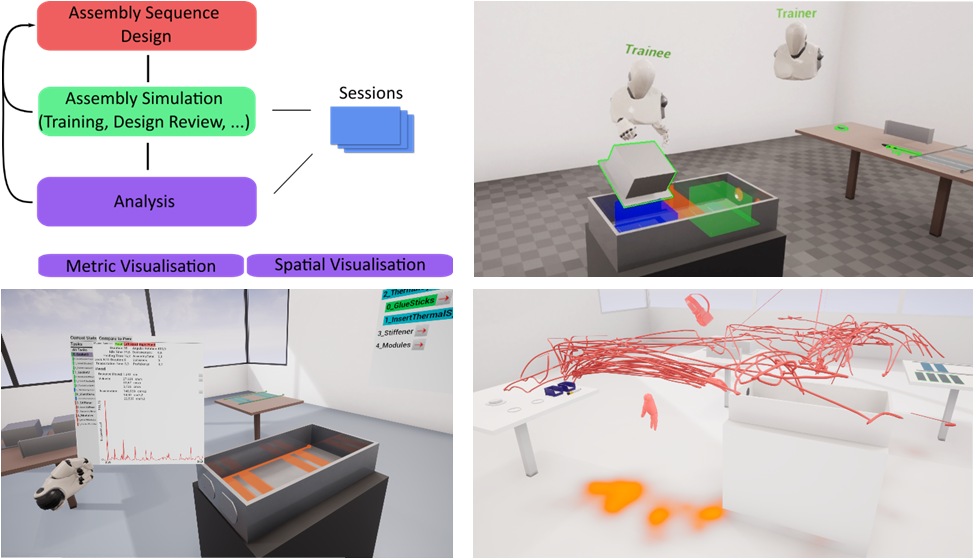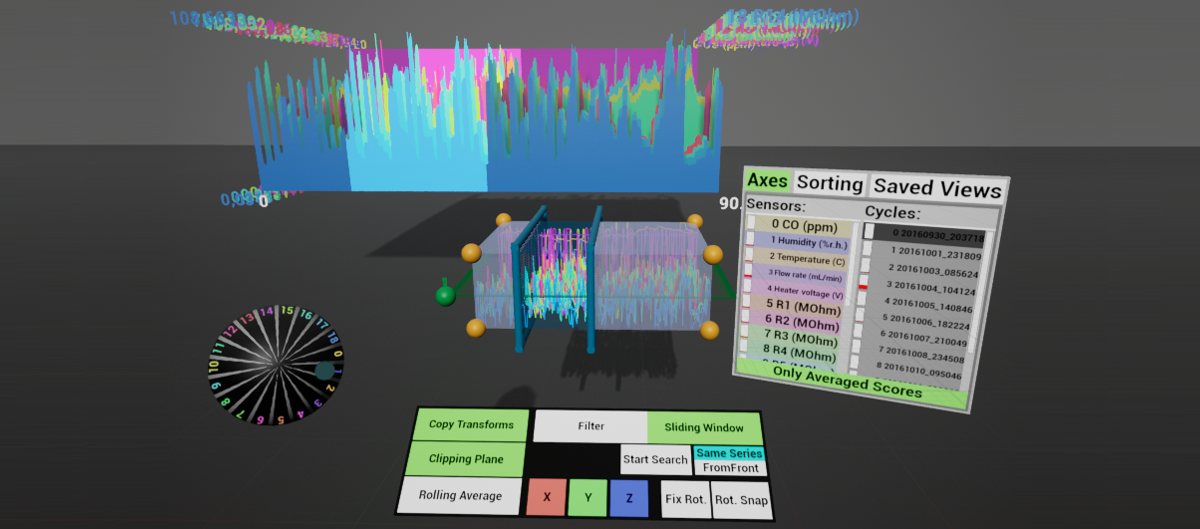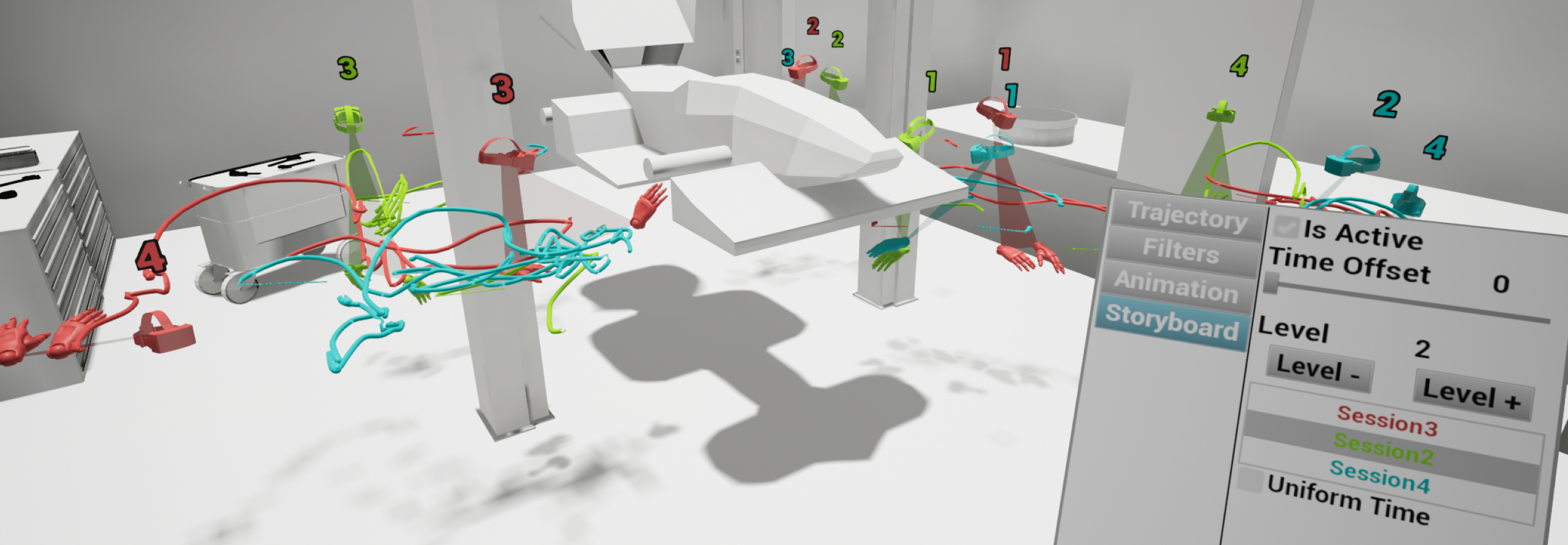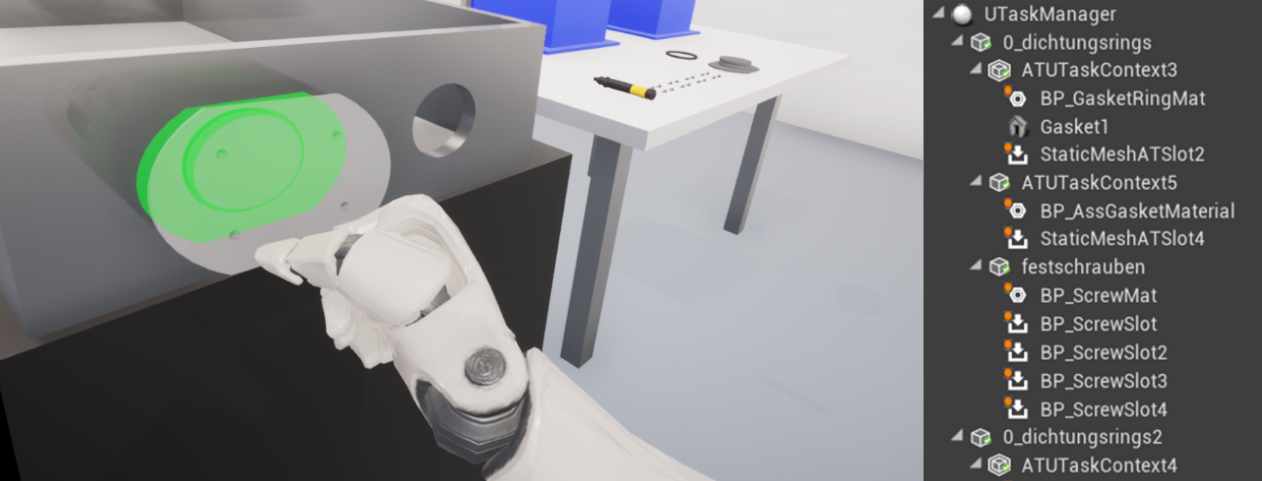Publications
2021

A System for Collaborative Assembly Simulation and User Performance Analysis
The increasing popularity of Virtual Reality for serious applications has raised the need for collaborative applications in virtual environments. In industry, Virtual Reality solutions are well-suited, e.g., for assembly design and assembly training scenarios. However, assessing the quality of assembly designs and the performance of assemblers is a nontrivial task and typically requires the collaboration of multiple agents in a virtual environment. In this paper, we present a concept and implementation of a comprehensive system for the design, training, and analysis of assembly sequences. The system allows experts to collaboratively review and analyse an assembly sequence and gives assemblers an environment to train and analyse their performance in collaboration with their trainer. The analysis is fostered by providing spatial and time-dependent metrics assessing the quality of an assembly performance. We devise and investigate different metrics and evaluate their suitability for reflecting training progress and performance.
Published at 2021 International Conferent on Cyberworlds (CW)
2020

Immersive Analytics of Anomalies in Multivariate Time Series Data with Proxy Interaction
In industry and science, sensor data play a vital role in research, optimisation, monitoring, testing and many other use cases. When performing tests with repeated cycles of similar behaviour, e.g., durability tests, it is often important to find anomalous sensor behaviour that deviates from regular patterns in the data. We here explore the design space of VRbased immersive analytics for time series data, for use e.g., in engineering contexts where an underlying application is also given in VR. The use of 3D visualisation for time series exploration is a much-discussed topic and careful consideration for its use must be taken. With the rise of immersive environments, we re-visit the classic problem of 3D time series visualisation and introduce an immersive walk-up usable interaction proxy that supports efficient navigation of otherwise possibly occluded time series views. The proxy indicates anomalies in the data for easy access and provides efficient zooming and filtering controls, among other effective interaction possibilities. This approach is combined with suitable data analysis techniques, providing an environment for effective and efficient immersive anomaly detection and comparative data analysis that we call WaveCharts. We demonstrate the applicability of our approach by two real-world use cases, and we discuss the necessary tools it provides to aid the analysis process of large sensor data.
Published in 2020 International Conference on Cyberworlds (CW)

Immersive analysis of user motion in VR applications
With the rise of virtual reality experiences for applications in entertainment, industry, science and medicine, the evaluation of human motion in immersive environments is becoming more important. By analysing the motion of virtual reality users, design choices and training progress in the virtual environment can be understood and improved. Since the motion is captured in a virtual environment, performing the analysis in the same environment provides a valuable context and guidance for the analysis. We have created a visual analysis system that is designed for immersive visualisation and exploration of human motion data. By combining suitable data mining algorithms with immersive visualisation techniques, we facilitate the reasoning and understanding of the underlying motion. We apply and evaluate this novel approach on a relevant VR application domain to identify and interpret motion patterns in a meaningful way.

Integrating Assembly Process Design and VR-based Evaluation using the Unreal Engine
To compete in industrial production and assembly design, companies must implement fast and efficientworkflows for the design of assembly processes. To date, these workflows comprise multiple stages thattypically cover a heterogeneous set of designer competences, used tools and data. We present a concept for anintegrated assembly process design workflow with VR-based evaluation and training methods leveraging theflexibility and functionality of a modern game engine. Our approach maps the required tools onto off-the-shelffeatures of these engines. This ensures an easy integration of our workflow into existing industry processesand allows quick results, which support fast prototyping. Furthermore, Virtual Reality based previews andevaluations significantly reduce the need for physical workstation prototypes, allowing for quicker feedbackand evaluation and early customer integration. We apply and evaluate our concept on an industrial assembly usecase for automotive traction batteries and give detailed insights into its adoption in practice and the advantagesover proprietary implementations.